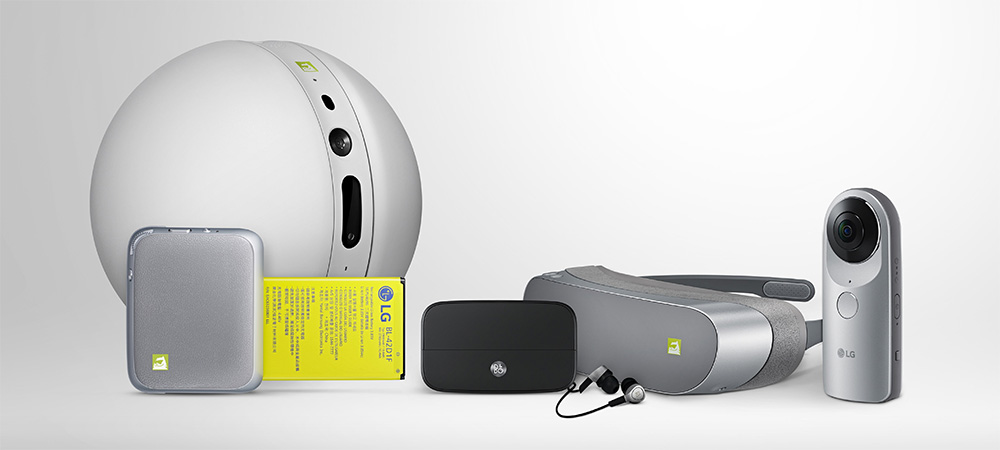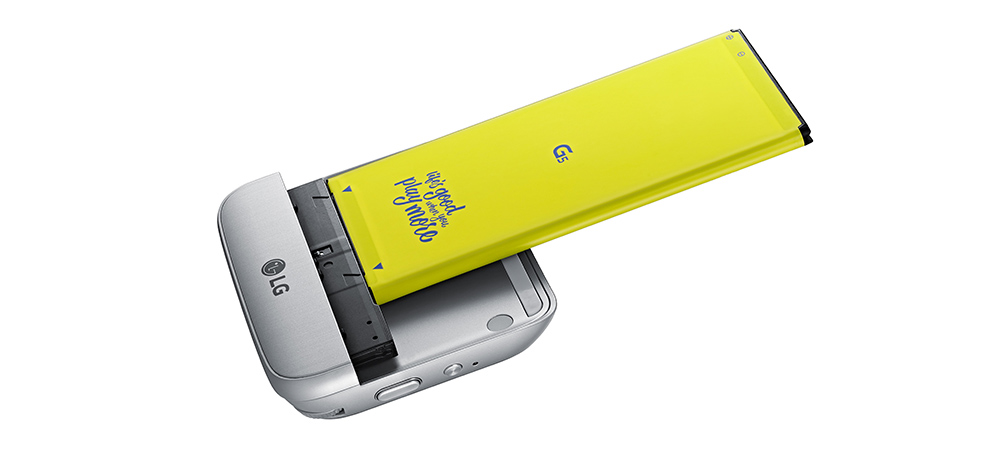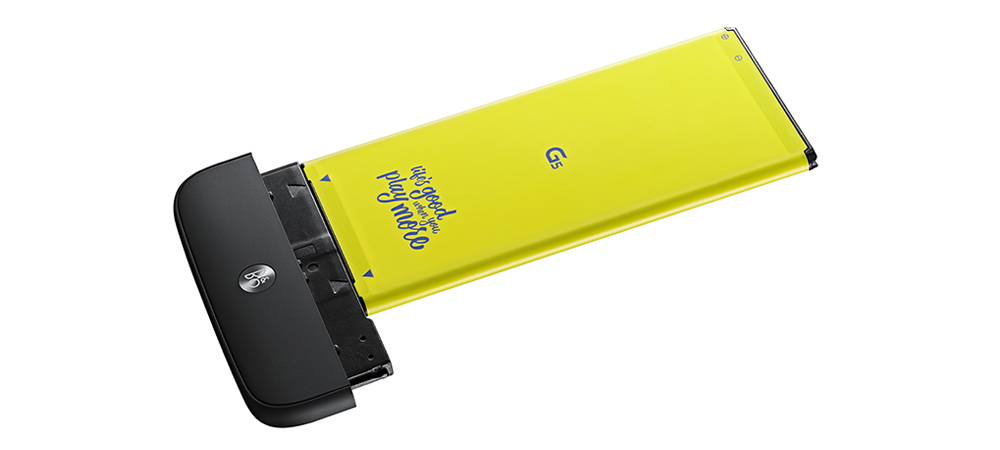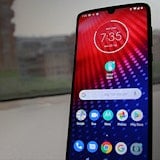
LG has been unfairly overlooked by consumers for some time now. Starting with the LG G3 back in 2014, LG has had one of the absolute best phones on the market two years running.
Quality alone is not enough, however. Apple and Samsung continue to dominate the smartphone industry, the global profits of which are almost solely split between those two companies. Despite offering a truly competitive product, LG has been unable to break into the market in any meaningful way. Making phones that are great, but admittedly not too different from the competition, hasn't got the company anywhere.
By making something completely different, LG could by-default stand out in the crowd. This is a dangerous path, and one that has been travelled before to no avail. Double-screened devices, dedicated Facebook buttons, hardware keyboards, and the sliding form-factor have all either gone the way of the flip phone, or never took-off to begin with.
Yet, there are some Holy Grails that are being sought-after in the industry. Flexible screens is one of them – a race in which LG competes heavily with Samsung – but the realization of this research is still years away.
The other divine cup being pursued, specifically by the likes of Google itself, is the modular smartphone. A device that can swap out parts of itself for others in order to specialize in certain functions at the expense of others.
Enter the LG G5. More than a mere equal of the Galaxy S7, or iPhone 6s, this phone offers a truly unique experience. Comparing it to a traditional smartphone really is like comparing Apples and Oranges. Either way you’re still getting a smartphone, but with a vastly different flavor.

The Modularity
The LG G5 is a modular smartphone; you can swap bits out and replace them with others in order to customize your experience. By switching one piece of hardware for another, you make your phone better at one thing, and worse at another. In other words, you can customize your device for an experience more-tailored to your personal needs.
The G5 isn’t as fully-modular as the still-hypothetical Project Ara smartphone from Google, but it’s the first look we’ve really had at a big-market handset with swappable pieces.
The LG G5’s modules
At launch, there will be two modules that can be swapped into the G5, aside from the standard one that will come with the phone. These modules will be optional extras, and pricing is still anyone's guess.
To switch between them, slide the phone’s chin downwards. This will also detach the battery, and the whole thing should slip out easily. Then attach the battery to the new module, and throw it on the phone. LG is even opening up module design to third parties, so we may see some funky branded stuff down the line.
Camera Module
The camera module, AKA the LG CAM Plus, doesn’t replace the rear lenses or do anything funky like that. Instead, it makes the phone more comfortable to hold as a camera, and adds some camera-style buttons.
There’s a dual-action shutter button, zooming controls, and quick-launch for the camera. It also houses an additional 1200mAh battery, which is never a bad thing. The downside is that it's a pretty fat component, and makes things a bit more awkward in your pants. Luckily, thanks to the swappable design, you can reserve using the camera module except for on occasions where you feel you would need it, or its extra charge, and have a nice, thin phone the rest of the time.

Audio module
The audio module, AKA the LG Hi-Fi Plus with B&O PLAY, is one we can see being very popular. It adds no real size or thickness to the phone, but increases audio quality to 32bit (up from 24bit) 384KHz. It has its own headphone jack, so if you want the better quality sound you simply switch to using your new jack at the bottom, instead of the standard one at the top.
There doesn’t appear to be much of a benefit to switching back to the standard module, once you have the audio one, but this at least allows folk who want a better audio experience an option that doesn’t include an external, unwieldy case being wrapped around it.
You can also use this module outside the phone, thanks to an extra piece that can be plugged in to take the place of the G5. Thanks to its USB-C port, it can bring high def audio to Android, iOS and, Mac.

Other specs and features
Of course, there’s a phone attached to these modules, and we shouldn’t neglect it.
Screen and size
One seemingly-minor, but potentially huge change LG has made is in screen size. Where both the LG G3 and G4 had 5.5 inch screens, the G5 has been trimmed down to 5.3 inches.
This is good news. After extended use, we found both predecessors just a little too large. Their 5.5 inch screens, despite LG’s impressive efforts to trim down the bezels, made a bit too much of an impact on your pocket. Backing off the dimensions even a few mm to a smaller phone seemed to be the difference between comfort and ‘are-you-pleased-to-see-me’. A 5.3 inch phone should hopefully fit the bill.
Camera
Probably the most interesting feature is the dual-lens rear camera system, 16MP and 8MP, which allows you to switch quickly and seamlessly between a standard wide-screen photo, and an ultra wide-angle one.
A regular smartphone image’s field of view these days is somewhere around 70-75 degrees. Humans have around 120 degrees. The LG G5’s wide-angle lens is an impressive 135 degrees. Switching between wide and normal shots is as quick as hitting a button; the lens doesn’t even need to readjust because you’re switching between physical lenses.
The front-facing camera is also 8MP, which should allow for some pro-level selfies, if that’s the kind of thing you’re in to.
Power
The CPU, and GPU have seen all the regular improvements, sitting roughly alongside the Galaxy S7. The battery is a tad smaller, offering 2800mAh compared to Samsung’s 3000mAh, but that should hopefully not make too much of a difference. Internal storage is 32GB, RAM is 4GB, and the microSD slot is still around if needed.
User interface
Curiously, the app drawer is gone from the home screen. This is reportedly because people prefer a simplified experience, but it’s the one real flaw we see with the LG's new approach to phone design. App drawers are great, at the very least give users the option to turn it off and on if they choose, rather than ditching it all together. It’s not a deal-breaker; you can always just download a third party launcher, but it’s definitely a bit of a let down in an otherwise intriguing handset.
Physical design
The rear-mounted volume have been moved to the side to keep things slim, but the lock button is still there with a built-in fingerprint sensor that looks remarkably reminiscent of the Nexus 5X.
Finally, LG has totally changed its approach to build materials. Obviously, the design features the new modular system, but the body of the phone itself is now made of metal, rather than plastic. This is a choice we’re seeing more manufacturers make every year, and every time it’s met with general popularity, if not down-right excitement (see Galaxy S6 release articles for examples). At the very least, the G5 will be shiny enough to catch your eye when sitting alongside the Galaxy S7 and iPhone 6s, and feel like an expensive device when it's in your hand.
Related Articles
Find Better Phones and Plans
Hundreds of cell phone plans unpacked. All the facts. No surprises.


































